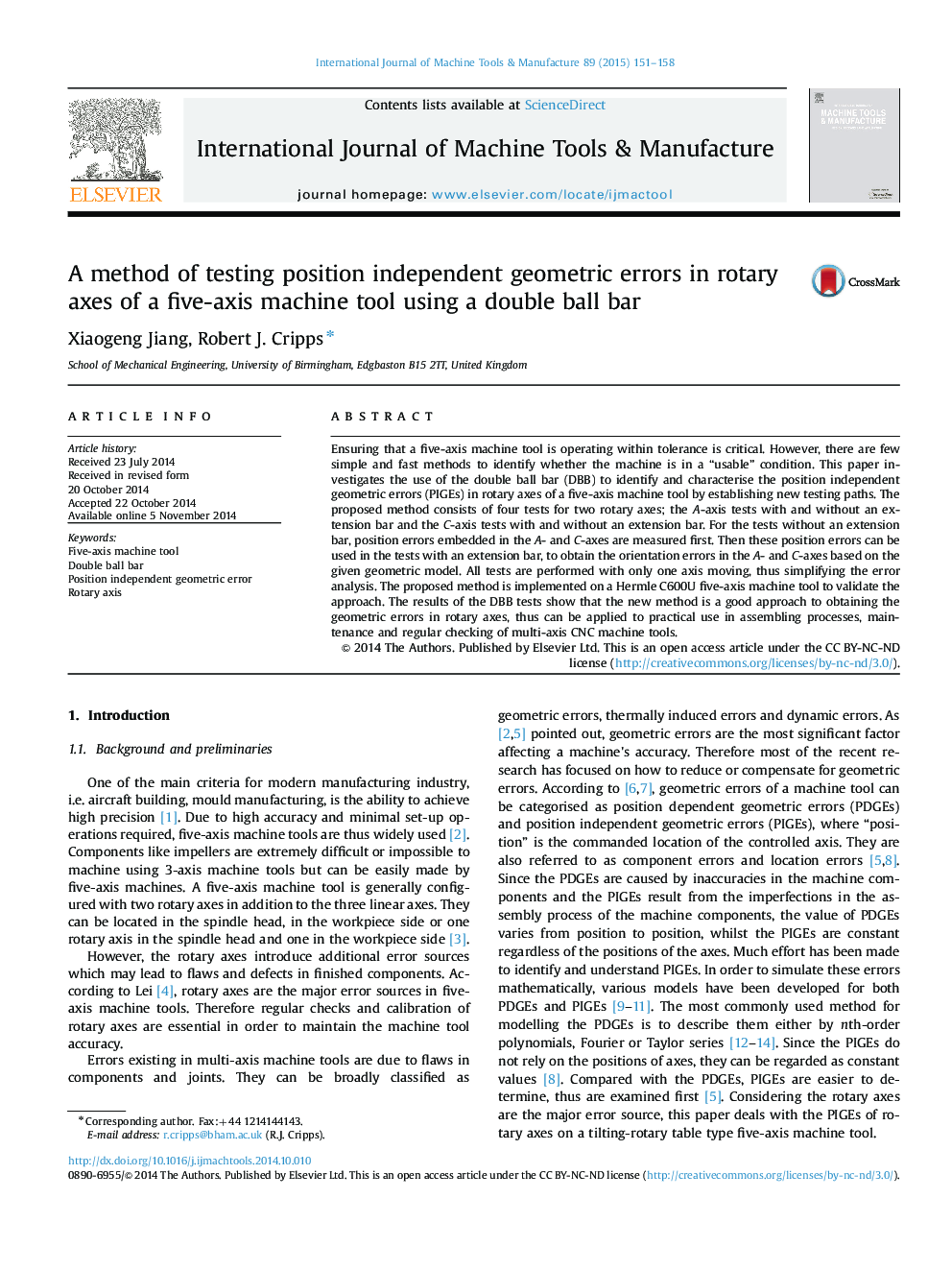| کد مقاله | کد نشریه | سال انتشار | مقاله انگلیسی | نسخه تمام متن |
|---|---|---|---|---|
| 778818 | 1464504 | 2015 | 8 صفحه PDF | دانلود رایگان |
• A double ball bar to test the position independent geometric errors of rotary axes.
• Setup errors identified with conventional planar tests.
• Only one axis driven during each tests.
• Geometric models given for deduction of errors from raw data.
• Method validated on a tilting rotary table type five-axis machine tool.
Ensuring that a five-axis machine tool is operating within tolerance is critical. However, there are few simple and fast methods to identify whether the machine is in a “usable” condition. This paper investigates the use of the double ball bar (DBB) to identify and characterise the position independent geometric errors (PIGEs) in rotary axes of a five-axis machine tool by establishing new testing paths. The proposed method consists of four tests for two rotary axes; the A-axis tests with and without an extension bar and the C-axis tests with and without an extension bar. For the tests without an extension bar, position errors embedded in the A- and C-axes are measured first. Then these position errors can be used in the tests with an extension bar, to obtain the orientation errors in the A- and C-axes based on the given geometric model. All tests are performed with only one axis moving, thus simplifying the error analysis. The proposed method is implemented on a Hermle C600U five-axis machine tool to validate the approach. The results of the DBB tests show that the new method is a good approach to obtaining the geometric errors in rotary axes, thus can be applied to practical use in assembling processes, maintenance and regular checking of multi-axis CNC machine tools.
Journal: International Journal of Machine Tools and Manufacture - Volume 89, February 2015, Pages 151–158
